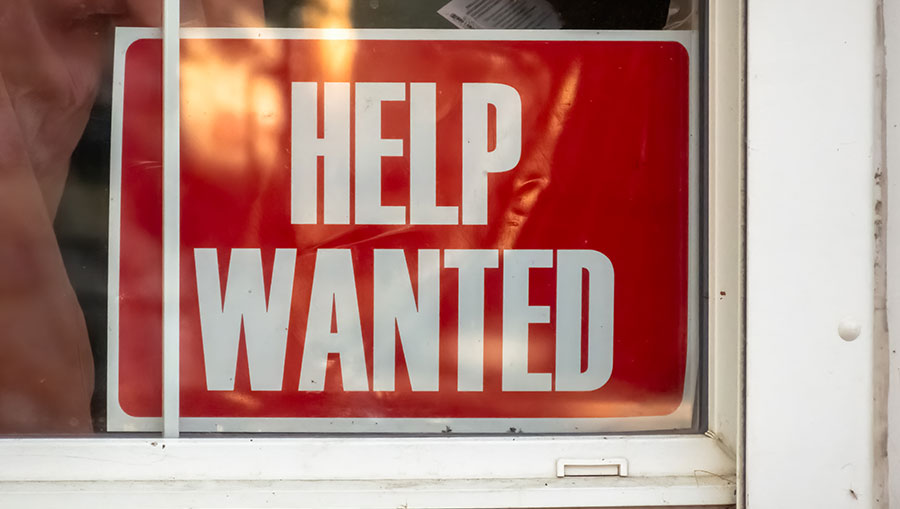Personal Wealth Management / Market Analysis
Have Markets Gone Young, Wild and Free?
What to make of news that new investors are driving stocks higher.
In headlines’ efforts to explain the market rally, a popular idea has emerged in recent weeks: Young, naive investors, armed with time and stimulus checks, are jumping into the market—lured by the prospect of hitting it big with recently roiled stocks. Anecdotal evidence suggests some of this is happening, but we doubt it is the sole—or even chief—driver behind stocks’ rise. Here are some points to consider before accepting this hypothesis as truth.
The latest numbers confirm online brokers have seen a huge influx of new accounts. Robinhood, an app-based brokerage launched in 2013 that is popular with younger investors, reported three million new accounts in Q1 2020 after hitting 10 million accounts total in December 2019.[i] Charles Schwab and TD Ameritrade report similarly robust new account activity. At the former, new accounts rose by 609,000 in Q1, with 283,000 in March alone.[ii] The latter announced funded accounts rose by over 560,000 and that average trades per day soared to 2.1 million in Q1.[iii]
No doubt these are big numbers on an absolute basis, but they are also hard to put into context because of their short history. Robinhood hasn’t been around long, so its data are exceptionally limited. More established brokerages don’t have publicly accessible account figures going back more than a few years. These firms’ executives claim first-time, younger investors are a big source of this activity, but the available data neither confirm nor invalidate whether that is the case. “New accounts added” could represent brand new investors, account transfers and/or acquired accounts from a merger or acquisition. Without that additional context and perspective, these are simply interesting observations.
Both recent and longer-running trends may also factor in the surge of new accounts. Major online brokers started offering commission-free trades late last year, perhaps enticing some new participants. COVID-19 may also have an indirect role. Rising investing interest could be a byproduct of the astronomical savings rate tied to a lack of spending and increased stimulus-driven savings. There is also the “boredom” theory: With many staying at home due to shelter-in-place orders, some people may be making some trades while their sourdough boules rise. A few may even be fulfilling their sports-betting fix by day-trading speculative penny stocks.
The most likely answer: It is some combination of these and other trends. Yet even if these new accounts represent a wave of younger, first-time market participants—particularly Millennials and older members of Generation Z—that isn’t a negative development. Many think-pieces argue this cohort—scarred by the 2008 financial crisis—is averse to markets and investing and distrustful of capitalism.[iv] A new demographic of investors discovering the magic of markets and compound growth—and the valuable experience that entails—seems positive to me. As for arguments this flood of new investors alone is fueling stocks’ rise, keep in mind: The market operates like an auction. The number of participants doesn’t matter as much as their willingness to buy, and buyers bidding against each other will ultimately determine whether prices rise.
Still, some pundits criticize this group of “low-information” newbies for behaving irrationally and piling into struggling or even bankrupt companies. Exhibit A: car-rental company Hertz. After declaring bankruptcy on May 22, Hertz’s share price fell -80% the next trading day to 56 cents.[v] It then skyrocketed nearly 900% to $5.53 on June 8.[vi] From there, it plummeted -80% to $1.24 on June 23.[vii] Observers attributed this activity to green investors, and while that is possible, extreme share price volatility—both negative and positive—isn’t surprising for bankrupt firms.
When Bear Stearns collapsed in 2008, JPMorgan reached a deal to buy it at $2 per share on Sunday, March 16.[viii] But the market didn’t let the price sink that low—on Monday, March 17, Bear Stearns’ share price closed at $4.81, and a week later, JP Morgan raised its terms to $10 a share.[ix] In January 2002, Kmart’s share price plunged to 66 cents after the company filed for Chapter 11.[x] Two weeks later, the stock price was up 112% to $1.40.[xi] Later that year, United Airlines declared bankruptcy in December, sending its share price to an all-time low of 64 cents.[xii] But it rose above $1 the next day—a gain of over 56%—and largely stayed above $1 until March 2003.[xiii] In percentage terms, these are huge moves—similar to Hertz today and akin to how penny stocks behave. Illiquid, low-priced stocks tend to swing violently. That isn’t new. But despite some extreme short-term positive jumps, bankrupt firms’ outlooks tend to be bleak, and over the longer term, their returns are overwhelmingly negative.
In our view, the force behind the market’s rally since late March matches the reason stocks plunged starting in February. Stocks plummeted in anticipation of COVID-driven lockdowns’ severe economic damage, and they have risen ahead of those restrictions easing—anticipating this will drive the economic recovery. We are already seeing some promising green shoots. That pundits cite a deluge of irrational day traders as the primary force behind the rally indicates doubts remain rampant. In our view, that sounds like another attempt to dismiss typical market functioning—and more evidence of a phenomenon we refer to as the “Pessimism of Disbelief.” From attributing the market’s rise to a handful of stocks to worrying about a second COVID wave, few seem willing to acknowledge that markets are acting as they always do: efficiently discounting widely known information. Though it may seem counterintuitive, we think this is more convincing evidence that a new bull market is likely underway.
H/T: Fisher Investments Research Analyst Charles Dornbush.
[i] “Young Investors Pile Into Stocks, Seeing ‘Generational-Buying Moment’ Instead of Risk,” Maggie Fitzgerald, CNBC, May 12, 2020 and “10 Million Thanks,” Staff, Robinhood Blog, December 4, 2019.
[ii] Source: Charles Schwab May 2020 monthly metrics report.
[iii] Source: TD Ameritrade May 2020 monthly metrics report.
[iv] Note: Not all Millennials are socialists. Even those that graduated from UC Berkeley, like the author.
[v] Source: FactSet, as of 6/23/2020.Hertz share price, 5/22/2020 – 5/26/2020.
[vi] Ibid.
[vii] Ibid.
[viii] “Timeline: A Dozen Key Dates in the Demise of Bear Stearns,” Staff, Reuters, March 17, 2008.
[ix] “JPMorgan Raises Bid for Bear Stearns to $10 a Share,” Andrew Ross Sorkin, The New York Times, March 24, 2008.
[x] “Kmart’s Stock Price Rebounds as Its Restructuring Efforts Gain Favor With Wall Street,” Joel Groover, National Real Estate Investor, January 30, 2002.
[xi] Ibid.
[xii] “NYSE Banishes Bankrupt UAL,” Jennifer Waters, CBS MarketWatch, March 28, 2003.
[xiii] Ibid.
If you would like to contact the editors responsible for this article, please message MarketMinder directly.
*The content contained in this article represents only the opinions and viewpoints of the Fisher Investments editorial staff.
Get a weekly roundup of our market insights
Sign up for our weekly e-mail newsletter.

You Imagine Your Future. We Help You Get There.
Are you ready to start your journey to a better financial future?

Where Might the Market Go Next?
Confidently tackle the market’s ups and downs with independent research and analysis that tells you where we think stocks are headed—and why.





